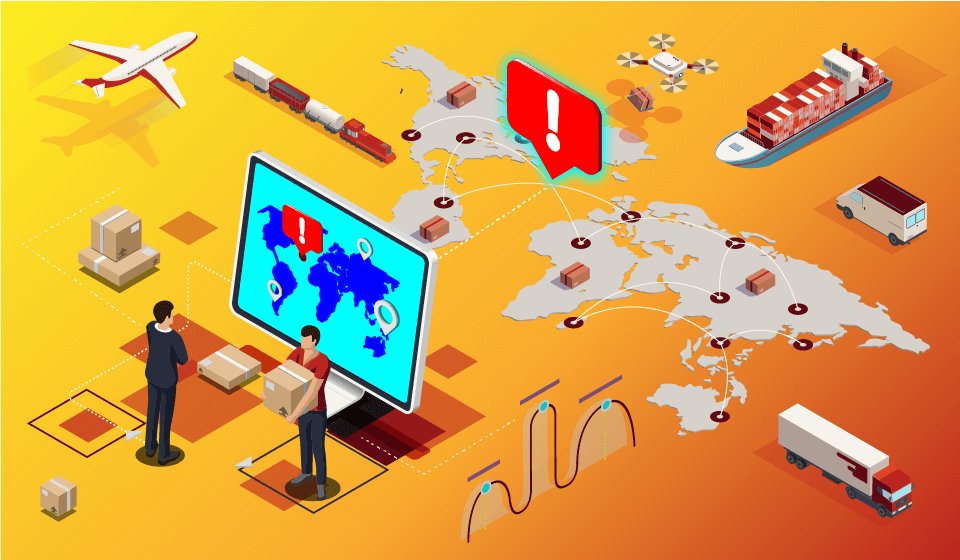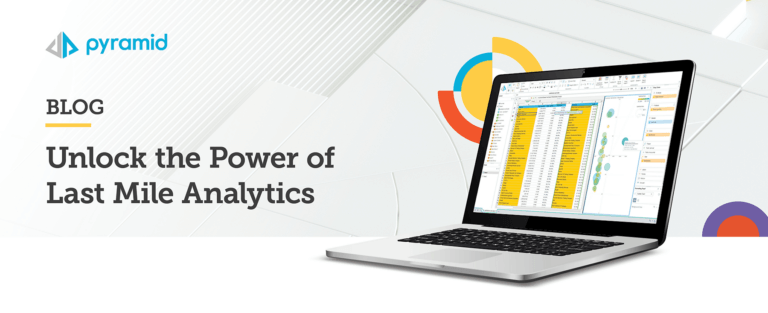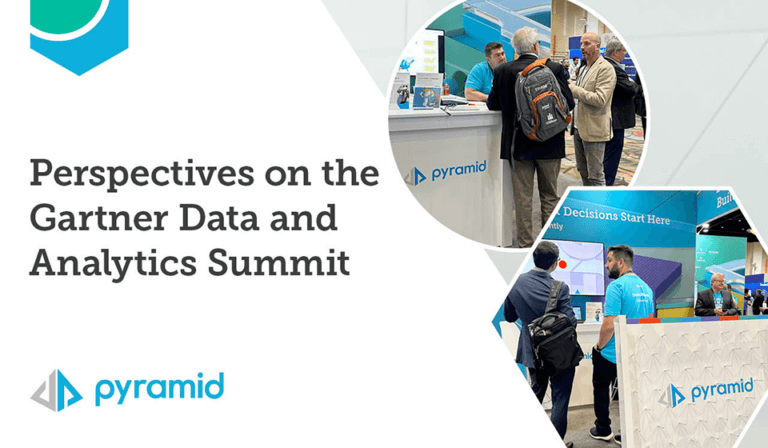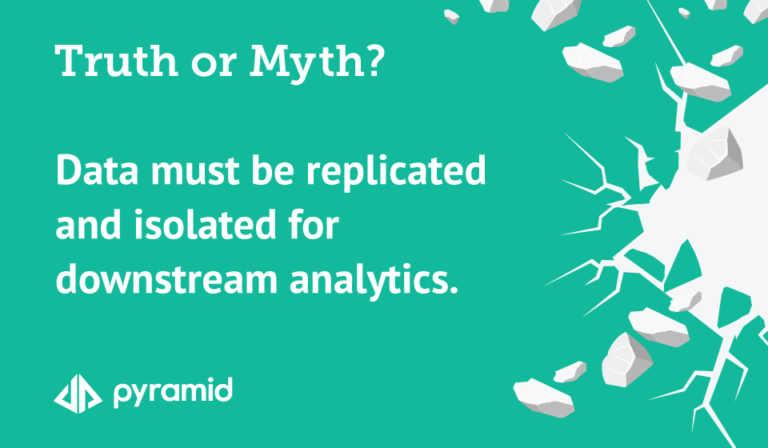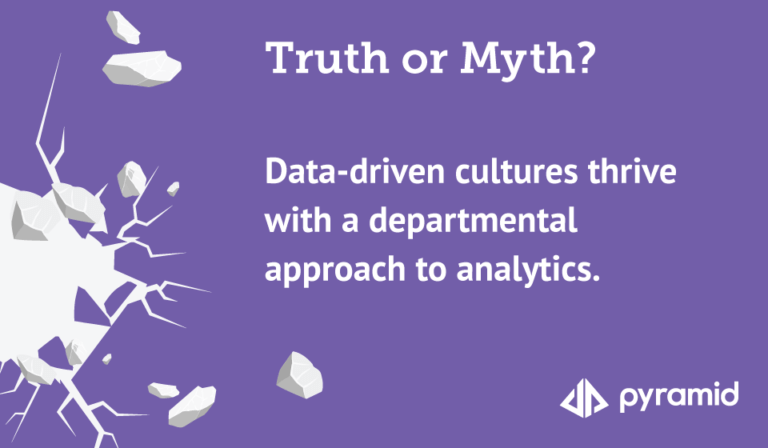As disruptions grow in frequency, advanced analytics insulates companies from devastating risk.
For years, executives have relied on historical data to predict business outcomes and future demand. Companies could anticipate regular ebbs and flows, relying on their suppliers and sales teams for known rates of supply and consumption and traditional business intelligence (BI) solutions for overall market insights.
The COVID-19 pandemic has disrupted this model, rendering historic analytics obsolete. As the crisis has spread, supply chains have become undependable, and demand has become uncertain across industries. More importantly, systemic vulnerabilities in both supply chains and predictive models have emerged — a critical issue that companies can no longer afford to ignore.
“Coronavirus highlights the need to transform traditional supply chain models,” says one Deloitte analyst, adding that COVID-19 could be “the black swan event that finally forces many companies, and entire industries, to rethink and transform their global supply chain model.”
As experts predict future crises at similar scales, business leaders must proactively address these vulnerabilities to protect themselves against the next disruption. They must reevaluate their supply chain risk management and demand analytics strategies to improve predictive models and ensure business continuity and success. This article explores how companies can face down uncertainty with next-generation managed analytics platforms by leveraging entirely new data sources.
Inherent pain points in global supply chains revealed
Decision-makers have used legacy BI solutions to track inventory and observe sales history. They have used this information to fill their stockrooms with enough products to meet predicted demand, prevent overstocking, improve efficiencies, and increase cost savings.
In this light, it’s tempting to blame recent business disruptions on a temporary crisis like COVID-19. But our most important takeaway in this context is that historic models are based on status quo assumptions. The problem with this backward-looking risk-management approach is that it fails to consider wide-scale societal disruptions. COVID-19 certainly isn’t the first global supply chain disruptor, and it will likely not be the last in our lifetimes.
Vulnerability from supply chain complexity
It is not an impending disaster, but the complexity of modern supply chain networks, that makes them vulnerable. As Bloomberg describes, “The world’s supply chains are facing a root-to-branch shutdown unlike any seen in modern peacetime as efforts to contain the coronavirus outbreak hit everything from copper mines in Peru to ball-bearing makers in Germany’s industrial heartland.” Since companies increasingly source their resources globally and from multiple suppliers, virtually no company is “safe.”
Each automobile, for example, is a collection of over 10,000 components, and each requires 10s if not hundreds of suppliers. Those suppliers typically source materials and sub-assemblies from countries around the world. Shutting down a handful of those supply chain links can disrupt all production of that automobile, even if others remain intact.
“A decades-long focus on supply chain optimization to minimize costs, reduce inventories, and drive up asset utilization has removed buffers and flexibility to absorb disruptions, Deloitte describes. “COVID-19 illustrates that many companies are not fully aware of the vulnerability of their supply chain relationships to global shocks.”
Vulnerability from inaccurate demand forecasting
Demand forecasting is a critical part of supply chain management and is relevant to all supply chain management processes, from customer relationship management (CRM) to product development. But wide-scale disruptions can have a resounding effect on consumer markets, which disrupts companies’ abilities to predict demand.
As many individuals around the globe isolated themselves and became unemployed, they also stopped spending. “Compounding the blow for companies, the initial supply shock has become interwoven with a demand crisis in Europe, the United States, and other major economies as workers and consumers are ordered to stay home,” says Bloomberg. This affects both B2C industries that service consumers, and B2B companies that service companies affected by unexpected drops in consumer demand.
Historical data and even real-time data analysis via traditional BI solutions provide companies with only a limited picture of potential shifts in demand, answering only the basic questions, such as . . .
- What happened?
- What is happening?
- Why is it happening?
- How should we respond?
. . . and not the forward-looking questions for which they need answers to reduce risk during an impending crisis:
- What will happen next?
- How are consumers reacting?
- How can we share these actionable insights across the organization?
- How can we improve business outcomes?
Advanced analytics are critical to mitigating future supply chain disruptions
Historically, COVID-19 is an outlier. But as a use case — one of many possible global disruptions that experts predict will become increasingly common — the pandemic reveals just how inaccurate preconceptions about supply, demand, and traditional BI have become.
“With uncertainty around the spread of COVID-19 in various regions, and spotty reporting in others, getting a simple, visual view of global cases and trends is also paramount,” says Forrester.
Fortunately, companies willing to reevaluate their use of historic models and traditional BI solutions have an opportunity in advanced analytics. Already, companies who have relied on basic forecasting for years have tapped into future trends using advanced analytics solutions and acted upon those insights to improve their decision-making at all levels of the organization.
“Digital technology … allows us to get insights never before possible (think the Internet of things, visualization, and AI-powered predictive analytics), and is enabling massive disruption across the demand and supply chains of multiple industries … [I]t’s clear that digital technology can be part of the solution in obvious ways … by enabling new ways of testing patients, analyzing and sharing data, and even helping to source needed materials or information.”
Forrester, “In a Time of Crisis, Can Digital Technology Save Globalization?” April 10, 2020
Accurate supply chain and demand forecasting can improve processes throughout the enterprise and improve outcomes for customers. It can reduce costs associated with overstocking, inventory stockouts, and product obsolescence — even at the onset of widespread crises.
Expanding insights with new data sources
Companies need more actionable, real-time data from their supply chains, which increases opportunities for accurate demand forecasting as well. To access them, companies can leverage new types of data and new data sources to improve predictive insights, without relying entirely on historic data like past customer behavior and seasonal trends.
Starting today, supply chain risk management must incorporate external data — purchased or supplied by partners and put into the hands of operational decision-makers through enterprise-grade analytics solutions. With the right analytics tools, external data can increase the accuracy of companies’ demand forecasts. Advanced analytics solutions allow companies to combine these widely underutilized resources with other types of data to create a truly powerful engine for real-time supply and demand forecasting.
Historically complex unstructured data, as well as data from non-traditional sources like social media, will become increasingly common in these advanced analytics applications. Companies will break down silos and become more connected to their complete supply network as well, increasing end-to-end visibility and collaboration that improves decision-making, no matter the role of the employee.
With advanced analytics, companies can:
- Identify new data sources and map available data to employees in strategic ways
- Enable suppliers to participate in supply and demand forecasting functions
- Identify opportunities to increase flexibility in mission-critical supply chains
- Enable team members to collaborate with each other, safely and proactively
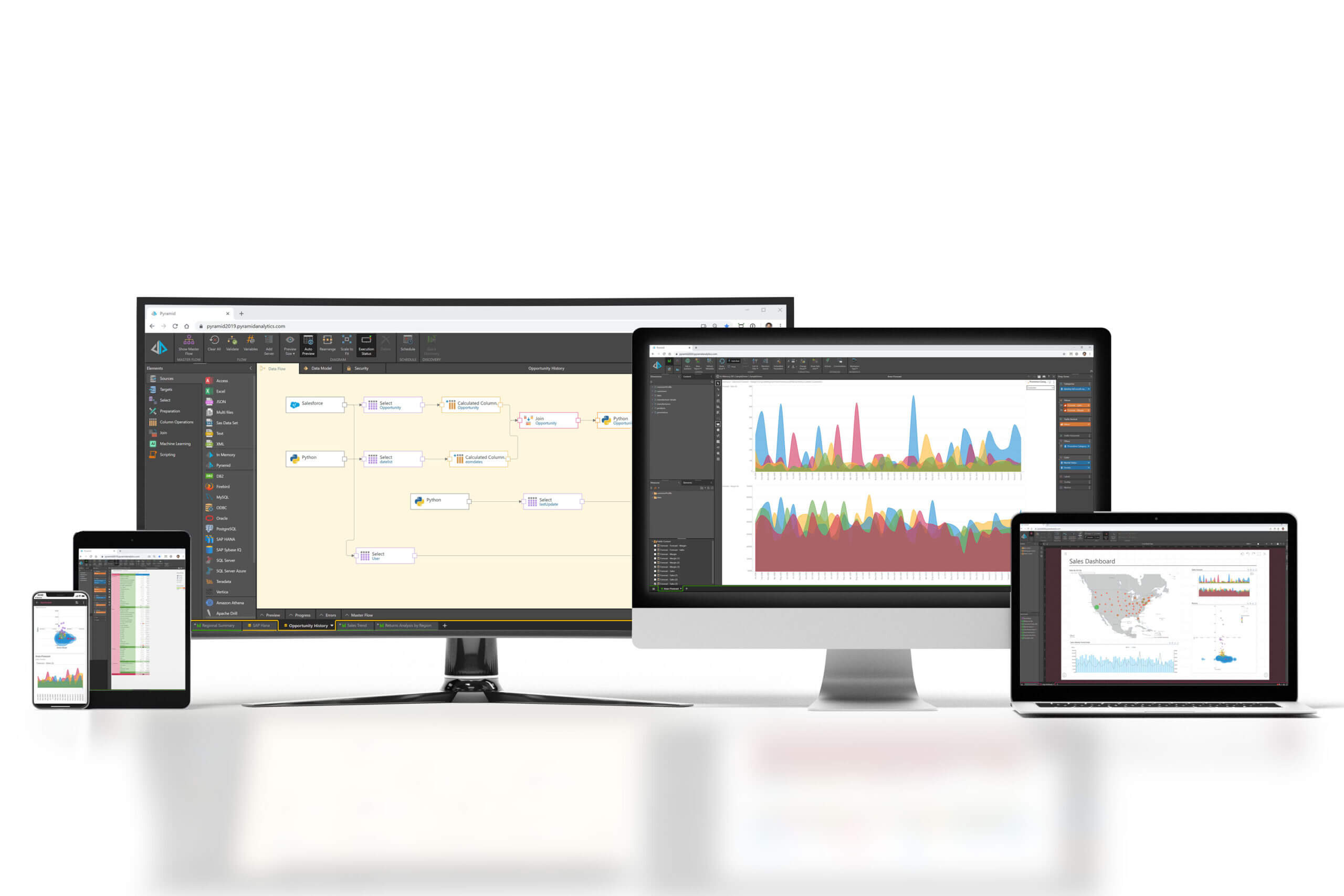
Next-generation supply chain management with Pyramid Analytics
Insights must move even faster across your organization, helping your teams understand real-time inventory, utilize key performance indicators, and manage your supply chains more efficiently. At the same time, you need to be confident the right customer, merchandising, promotion, or supply chain data is being shared safely and with the right internal teams in ways that empower their decision-making abilities — no matter their seniority. With the proper enterprise business analytics platform, you can accomplish both.
As companies adopt risk management strategies for global supply chains, they must look to a new kind of governed, managed analytics platform. The Pyramid Analytics platform includes a comprehensive web-based interface for data acquisition and transformation. Pyramid is also inherently “multi-tenanted,” making it easy to manage data access permissions between organizations. Combined, these two capabilities allow companies to source inventory and lead-time data from all suppliers in an extended supply chain network. This can be done over the internet and does not require the use of application programming interfaces (though these are also supported). Using Pyramid, suppliers provide access to the data they already have. Pyramid maps it into a common data model and makes it available for planning and operational decision-making. One of Pyramid’s partners uses this exact technique to source data from over twenty Fortune 100 companies.
Our decision support and managed analytics applications open opportunities for a new generation of risk management capabilities. Our tools connect decision-makers at all levels of your organization to boost visibility across end-to-end supply chains and support your ability to resist business disruptions, even when impacted by global events. Business users easily set up their own risk assessment views tailored to them, giving decision-makers and executives the ability to quickly identify and analyze risk based on their specific business role.
Whether it is a “black swan” event like COVID-19, a sudden regulatory change, or a new business opportunity, Pyramid Analytics helps you stay ahead of trends, better manage inventory and supply chain processes, and share business intelligence insights with the teams that need them most.
Contact us to learn more.



